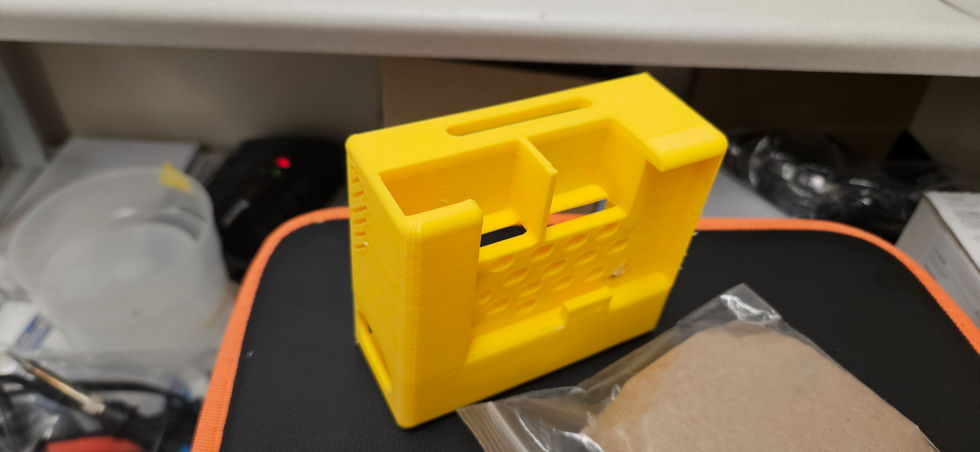
Create Your First Project
Start adding your projects to your portfolio. Click on "Manage Projects" to get started
3D Modeling of Radwatch Dosenet and Miniport Devices
As part of my early work with UC Berkeley's Dosenet/RadWatch projects, I led the 3D modeling and physical design efforts for our networked radiation detector and environmental sensor systems. I'll refer to this henceforth as the Dosenet Device.
These Raspberry Pi boards were mounted custom electronics and environmental detectors into compact, durable enclosures meant to operate in either mobile or stationary configurations in schools, community spaces, and abroad.
When I joined my freshman year I had skills CAD modeling in Autodesk Inventor and Fusion; I was tasked to focus on making our sensor housings practical, reliable, and easy to assemble. Existing designs were using prefabricated plastic housings that did not fully meet our design needs.
The first few iterations were a simple design, housing the raspberry pi board and many interconnected DuPont wires that interfaced with the rpi on a bread board. The sensor and battery still hang precariously, and early iterations, mostly for testing of data collection software, used velcro, straps and tape to secure the electronics to the design.
Over time the model began to take a more complex shape, with various upgrades made to the main housing, which changed over time primarily due to a range of battery options that were explored, as well as switching other electronics. Eventually a custom designed PCB and reliable set of sensors and batteries meant a more consistent form would emerge as the iterating process continued.
I created a slotting system for the battery and D3S radiation detector housing, as well as expanded room for the sensor systems with slots, and further considerations to durability, ergonomics, air flow, and a laser-engraved acrylic cover.
The Radwatch team explored and added additional sensors to the existing semiconductor Geiger counter, the D3S (a scintillating radiation detector), and CO2 sensor. A VOC (volatile organic compound) sensor was added, as well as AQI (air quality), PTH (pressure, temperature, and humidity), and GPS sensors. Our touchscreen was fully integrated early on in the design. Access points were made for cable management which included USB to connect keyboards and mice, the D3S, and power cable for the rpi.
I explored some variations to reduce printing time for the case as it grew in size and complexity. An earlier versions required melting or gluing in magnets to secure the acrylic screen. Several fills and materials were tested, and particularly doomed iteration split the piece into two parts that did provide the required ease of assembly and durability in its case design.
Eventually, I shifted focus toward software and community outreach, including building curriculum, developing code pipelines, and mentoring new students. I helped transition the 3D modeling role to a new undergraduate researcher, who picked up where I left off and continued developing the designs based on my models and documentation, where it reached its most recent version.
This project represents one of my earliest experiences blending technical design with scientific communication, and it helped shape the way I approach accessibility in engineering work. The Dosenet device remains a publicly accessible and free to borrow interface to collect and observe environmental data with live plotting of data and auto-save/upload features for the collected datasets, published at the end of our analysis pipeline on the Radwatch website.
I'll additionally cover a scrapped project, the Dosenet Miniport, which used a pi-zero board and smaller touchscreen, and a limited array of sensors.
I was proud of its condensed size and quick turnaround time of 3-4 months over the four iterations I solely created. The miniport device would house the semiconductor geiger chip, a CO2, and the pizero with a slimmed down custom PCB into a comfortable and unique design that, for a short while, condensed the capabilities of the Dosenet device into small package. Live display of data proved to not be as functional with the limited processing of the smaller RPi, the case designs are shown below.





































































































